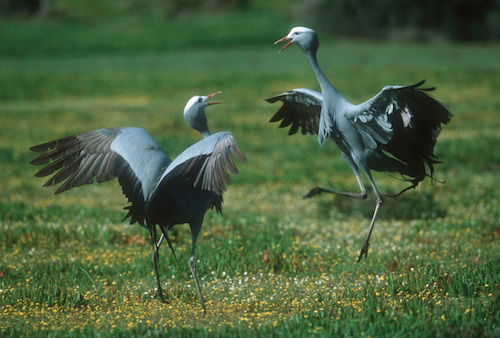Blue crane, Grus paradisea (also known as the Stanley Crane and the Paradise Crane). Courtship display. Common in parts of its historic range, between 10,000 and 20,000 birds remain, it began a sudden population decline from around 1980 and is now classified as critically endangered. The majority of the remaining population is in eastern and southern South Africa, with a small and separate population in the Etosha Pan of northern Namibia. The primary causes of the sudden decline of the Blue Crane are human population growth, the conversion of grasslands into commercial tree plantations, and poisoning: deliberate (to protect crops) or accidental (baits intended for other species, and as a side-effect of crop dusting. Republic of South Africa

